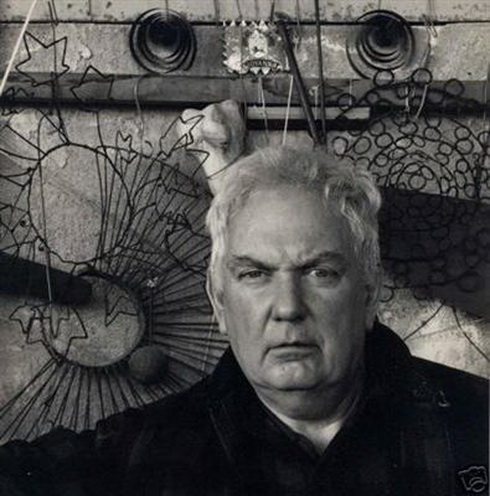 |
Alexander Calder | |
| Birth Date: July 22, 1898 |
||
| Death Date: November 11, 1976 Artist Gallery |
||
| Alexander Calder is known for inventing wire sculptures and the mobile, a type of kinetic art which relied on careful weighting to achieve balance and suspension in the air. Calder was born into a family of artists; his father and grandfather were sculptors and his mother was a painter. Due to his father’s public commissions, the family traveled across the country throughout Calder’s childhood. Calder was encouraged to create from a young age, and always had a workshop wherever the family lived. His first sculptures were a small brass duck and dog, which he gave his parents as Christmas presents in 1909.
Despite an early interest in art, Calder did not set out to be an artist. Instead, he graduated from the Stevens Institute of Technology with a mechanical engineering degree in 1919. He excelled at mathematics, and his experience in engineering would later apply to his unique artistic approach. After graduation, Calder worked various jobs, including as a fireman in a ship’s boiler room. While working onboard a ship journeying from New York to San Francisco, Calder was inspired by the simultaneous visibility of the sunrise and full moon over the coast of Guatemala, and he committed to a career in art shortly thereafter.
In 1923, Calder moved to New York and enrolled in the Art Students League. During this time, he worked as an illustrator for “The National Police Gazette” magazine, and was sent to sketch at the Ringling Bros. and Barnum and Bailey Circus. The circus became a lifelong interest for Calder, and after moving to Paris in 1926, he created his own miniature Cirque Calder (Calder’s Circus), made from wire and found materials. In total, the circus consists of over seventy miniature figures and animals, and nearly one hundred accessories. In Paris, Calder’s audience would sit on a low bed or crates, munching peanuts and using noise makers while Calder choreographed, directed, and performed Cirque Calder, narrating the actions in English or French. Accompanied by music and lighting, performances could last as long as two hours.
Although not the first person to use metal and movement in their work, Calder was a pioneer for his use of both. He always carried wire and pliers with him so that he could “sketch,” using the wire to create a drawing in the air. He once said, “I think best in wire.” His work became abstract after a visit to artist Piet Mondrian’s studio in 1930, when Calder saw Mondrian’s abstract, two dimensional geometric works and was inspired to make them move. As a result of this experience, Calder began to use wire to create inventive, kinesthetic compositions that introduced a new genre of “mobile” art. His hanging, kinetic sculptures are regarded as being the earliest manifestations of art with movement, derived from touch or air currents. The hanging mobiles were followed in 1934 by outdoor standing mobiles in industrial materials, which were set in motion by the open air.
Throughout his career, Calder created a diverse body of work that included large outdoor sculptures, paintings, woodwork, public art, and abstract images. By the 1960s, Calder’s art was recognized worldwide, and the Guggenheim Museum held a retrospective exhibition of his work in 1964. With his son-in-law, Calder published a well-received autobiography in 1966. His works have been collected by notable museums and galleries such as The National Gallery of Art and The Museum of Modern Art.
|
||


